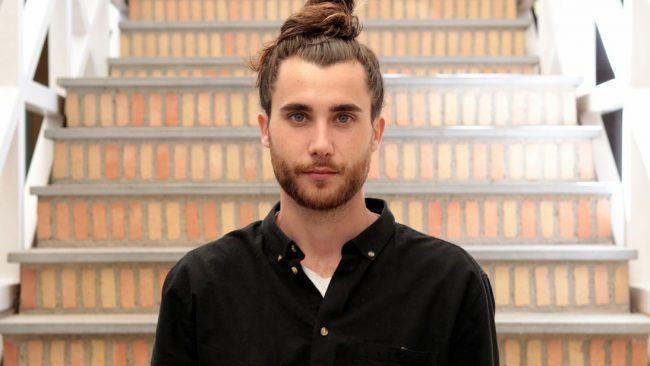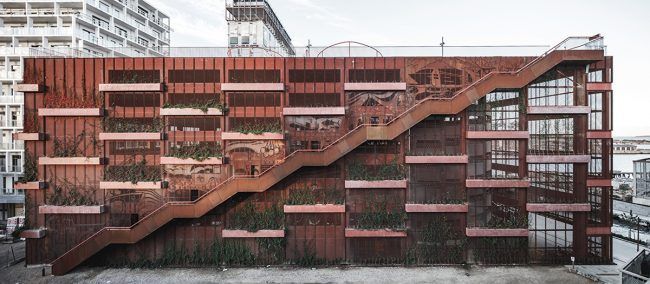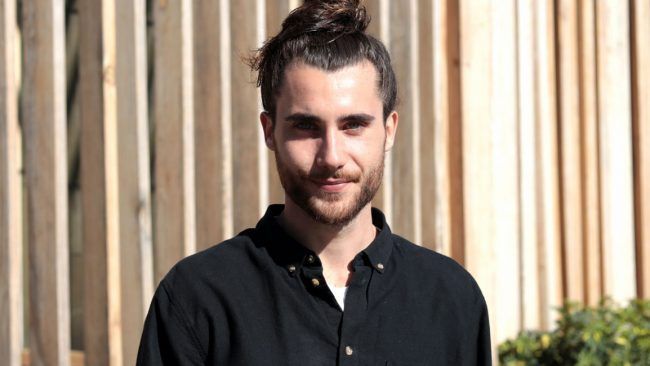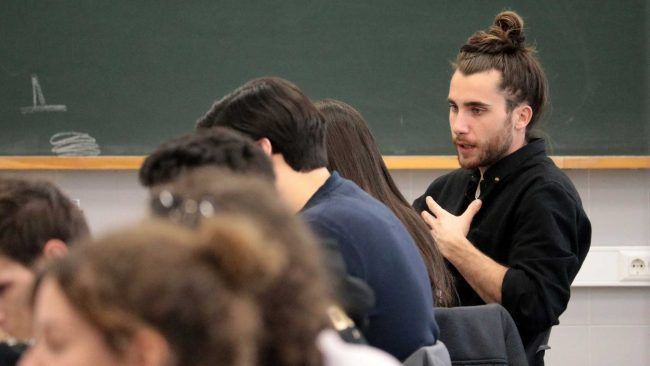Giacomo Pizzo was one of the international architects invited to take part in our ConnectA worskhop, where he assisted students in their projects and was part of the jury. Project leader at JAJA Architects, a studio based in Nørrebro (northern Copenhagen), Giacomo is used to working in international, multicultural teams. With him we talked and discussed about architecture, exploiting opportunities, and facing new challenges. Always with a positive, energetic approach.

Giacomo, what inspired you to become an architect and how did that inspiration evolve?
It all started at the Arts School in Italy before I decided to study Architecture. To be perfectly honest, I was interested in everything that had to do with shapes, design or aesthetics at any level. Also, the interaction with light, which eventually led me to choose architecture over other design-related disciplines. In my opinion, it is a very complete education that has given me an overview and has also allowed me to work in other fields related to design. This is something that doesn’t always work the other way around.
“Have an open mind, a very open conscience, and curiosity towards the world. That is what makes architecture.”
I studied in Venice, a very unique place to study architecture. As an open-air museum, it has a very peculiar urban condition, and has definitely had a strong impact in the way I understand architecture. I then moved to London, where I worked for a year doing high-end transformation of Victorian houses. It was then that I decided to move to Copenhagen, which was a big clash. I took a master’s degree at the Royal Danish Academy and, after all these years, I am really grateful for all the contrast and the experiences I have brought from each place.
A positive, energetic approach to architecture
Once you arrived in Copenhagen, did you start working at JAJA Architects straight away?
After I finished my master’s degree I started working in a very young and rising office, which boosted my networking. It was right after this that I joined JAJA Architects.
What defines the projects signed by JAJA Architects?
I would say that what defines us is the choice of not defining our architecture. It is a decision of not specializing in one specific scale, project or social condition. This is the reason why we have been experimenting a lot. JAJA Architects can be defined as an outsider. We work in a very wide range of projects: from very small transformations of urban spaces to big masterplans. We work with public, but also with private projects. We work with industrial heritage, and also with historical buildings.

My current projects go from the oldest castle in Denmark to public schools, museums, sports facilities… What makes JAJA Architects special, its distinguishing feature is that we always try to go beyond. No matter the type of project, there is always something more, an element of play.
Tell us more about that old castle you are working in right now!
Nyborg Slot dates back to Roman times and it is actually the oldest castle in the country. It is a big heritage for Denmark, and the renovation includes the restoration of the old part and a new building. This newly built museum traces the old walls of the castle, reestablishing its original presence.
It is a very special project because it is a bit more high-end and it has a larger budget. Of course, it is also more challenging in terms of Archaelogy and the different political views over a heritage building. It is a battle in many fronts, but it has been a very exciting adventure so far. Sometimes frustrating, too. In general, I am quite happy with it.
Giacomo, what gives you the most gratification in your work?
That is a very complicated question! I think it is when the message gets through, which links to the question “What is the most frustrating part of your job?“. And this is obviously when your ideas are misinterpreted or you are having a hard time giving your point of view to somebody who is not an educated architect.

When you are able to give a new perspective to someone, you disrupt that person’s reality. So yes, what gives me the most gratification is when I can see that, after a process, everything seems to align and the solution becomes natural.
Is there anything fun about your job, anything that you enjoy doing?
I consider myself to be very lucky to be part of such a young and inspired group of people, with so many different backgrounds. At the same time, having an open approach to architecture results in a different experience with every project. For example, last year I was working in a project about street culture; I had to learn a lot about parcours, skating and street bands, DJs… Things that were new to me at that moment. And right now I see myself digging into Archaeology and medieval ruins, medieval tectonics. This is definitely the most fun: being in this vortex of different inputs that make you change and evolve.

Is there anything specific about Scandinavian architecture? Do you think there is a Nordic way of doing architecture?
We all have to learn from each other. Scandinavia is a community with a very strong identity both in design and architecture. Also, a region with very special circumstances in terms of weather, geographic and socio-economic conditions. In this sense I would say that Denmark stands out in a very socialistic approach to architecture, where individualities are pushed away from the projects in order to address a bigger audience.
Talking about architecture, I would divide Denmark in two main chapters: the School of the Big Masters (Arne Jacobsen, Jørn Utzon…), who really gave Denmark an international exposure and created global icons. On the other hand, there is the new Nordic since the early 2000s, with a very transversal cultural revolution which of course has had an impact on architecture: PLOT (now JDS and BIG), Bjarke Ingels…. And of course the references that came from The Netherlands and were brought and revisited in a Danish key, like OMA.
Internationalization, a key factor for future architects
Some of these studios that you mention are now opening offices in the US, and in China… Is Asia the new El Dorado for architecture?
A lot of offices are still opening in the US and Canada. I think it has to do with exporting knowledge or even a brand, and Denmark is using its international recognition to sell its architecture abroad.
“Beauty, structure and function: no project can survive if it lacks any of these three features.”
As for Asia, there is just more going on there at the moment, so it is normal if a studio wants to be there. China has had a huge middle class revolution, and the consequence is that a lot of construction is going on in the country. In the last 50 years we have built a lot and some forecasts say that we are going to triplicate the current speed of building in those developing countries. So yes, there is a lot of work to be done in Asia, Africa and even Latin America.
Having said that, what advice would you give to a person who is currently studying Architecture?
Without a doubt: Get ready to move, and keep your eyes and minds open. It is important to acknowledge the fact that you are a very privileged individual because you can access education. In architecture there are very few jobs, this is something to also keep in mind. You as an architect need to be respectful of the responsibility you have in shaping how people live in urban or natural contexts.
Have an open mind, a very open conscience, and curiosity towards the world. That is what makes architecture.

In your opinion, what is more important: a) a building which can become an icon, b) a building which requires less maintenance and lasts longer, or c) a sustainable building?
Definitely a mix of a, b and c! In my school in Venice we had this logo from the Vitruvian School which said: VENUSTAS, FIRMITAS and UTILITAS. These three words in Latin represent the three main principals of architecture: beauty, structure and function. No project can survive if it lacks any of these three, and I would even add a new element to the formula: nature.
You know that our students will be going to Copenhagen on a trip next March. Is there anything you would like to suggest, a building that they cannot miss? Of course, it can be from JAJA Architects!
My first suggestion would be trying to live the city like a Dane. Danes are very relaxed and time seems to be unimportant to them, so avoid the to-do lists! Move on a bike, have a beer, jump into a canal (even if it’s frozen!), get into a sauna, and go to the Louisiana Museum… It is such a special mix of a museum that spreads from an old villa, and expands with a modern building, all placed in one of the most beautiful landscapes you can find in Denmark, by the sea.
It is a perfect example of tradition and modernity, perfectly connected with nature and art.





























